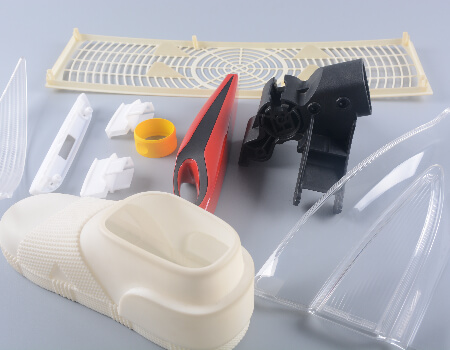
Die casting is a manufacturing process that involves forcing molten metal into a mold cavity under high pressure to create complex and precise shapes. The process is well-suited for high-volume production, offering dimensional accuracy, smooth surface finishes, and the ability to produce intricate designs. The choice of material plays a crucial role in determining the quality, performance, and cost-effectiveness of the die-cast parts. This article explores the most commonly used materials in die casting, their properties, applications, and factors to consider when selecting a material.
Several metals and alloys are suitable for die casting, each offering unique advantages for different applications. Here, we discuss some of the most commonly used materials in the industry:
Properties:
Aluminum is one of the most widely used materials in die casting due to its lightweight nature, excellent corrosion resistance, and good thermal conductivity. Aluminum alloys such as A380, A360, and A413 are commonly used for die-cast components, offering a good balance between strength, weight, and ease of casting.
Applications:
Aluminum die-cast parts are commonly used in the automotive industry for engine blocks, transmission housings, and other structural components. They are also found in consumer electronics, telecommunications equipment, and aerospace components due to their strength-to-weight ratio and durability.
Advantages:
Properties:
Zinc alloys, such as Zamak (Zinc, Aluminum, Magnesium, and Copper), are highly suitable for die casting due to their lower melting point and excellent fluidity. This allows for casting intricate designs with thin walls and complex geometries. Zinc die-cast parts also exhibit excellent dimensional stability and wear resistance.
Applications:
Zinc is commonly used for producing small to medium-sized components such as hardware, connectors, electronic enclosures, and automotive parts. Its strength and malleability make it a good choice for applications where detailed surface features and tight tolerances are required.
Advantages:
Properties:
Magnesium is the lightest structural metal, making magnesium alloys ideal for applications where weight reduction is crucial. Magnesium die-casting alloys like AZ91D and AM60 offer a good combination of strength, rigidity, and corrosion resistance. Magnesium’s excellent fluidity allows for thin-walled, complex parts.
Applications:
Magnesium die-cast parts are often used in automotive and aerospace industries to reduce weight without compromising strength. They are also found in electronic devices such as laptops, tablets, and cameras, where lightweight construction is essential.
Advantages:
Properties:
Copper and brass alloys are used in die casting when parts require excellent thermal or electrical conductivity. These materials offer high strength and corrosion resistance, making them suitable for a variety of industrial applications. Brass, a copper-zinc alloy, provides good machinability and durability, while copper alloys can withstand high-temperature environments.
Applications:
Copper and brass die-cast parts are often used in electrical components, plumbing fixtures, and decorative hardware. Their ability to conduct electricity efficiently makes them ideal for connectors, terminals, and other electrical applications.
Advantages:
Properties:
Though not as commonly used as other materials, lead and tin alloys sometimes serve specific applications in die casting. These alloys have a low melting point, making them suitable for casting intricate shapes. However, due to health and environmental concerns, their use is more restricted compared to other materials.
Applications:
Specialty applications, such as radiation shielding, small parts in electronics, and certain types of seals, use lead and tin die-cast parts. Tin alloys, for example, serve well in components that require a non-toxic, malleable material with good corrosion resistance.
Advantages:
Selecting the right material for die casting involves considering several factors to ensure the final product meets the required specifications and performance criteria:
1. Mechanical Properties: Evaluate the strength, hardness, and durability required for the application. Materials like aluminum and magnesium are ideal for lightweight yet strong components, while zinc provides superior impact strength.
2. Corrosion Resistance: Consider the environment where the part will be used. Aluminum and brass provide excellent corrosion resistance for outdoor applications, while zinc suits parts exposed to moisture.
3. Melting Point: A lower melting point can reduce energy consumption and enable the casting of more intricate shapes. Zinc and magnesium alloys, with their lower melting points, are advantageous for detailed components.
4. Machinability and Finish: If the die-cast part requires additional machining or a specific surface finish, choose materials that are easy to work with, like aluminum or brass. Materials with good surface finish capabilities can minimize post-casting processes.
5. Cost and Availability: The cost of the raw material and its availability in the market can significantly affect the overall cost of the die-cast part. Balancing material cost with performance requirements is key to achieving cost-effective production.
For high-quality die-cast parts, PROTO MFG offers a comprehensive range of solutions tailored to your project needs. With expertise in die casting using various materials like aluminum, zinc, and magnesium, PROTO MFG ensures precise and consistent results. Whether you need lightweight components for automotive applications or durable parts for industrial use, PROTO MFG combines advanced technology with reliable service to bring your designs to life. Start your next die-casting project with PROTO MFG and experience seamless production and exceptional quality.